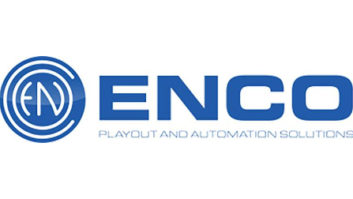Specialty Add-On Cards: Just How Do You Make Them Work Under Windows NT, 2000 or XP?
In the computer world, one thing is certain: change.
Not only is hardware constantly improved and upgraded to run faster, operating systems also improve to take advantage of the new hardware or add features not available in earlier versions.
All things considered, the amount of backwards compatibility is amazing. Literally thousands of programs and older hardware still work fine on the newer machines and operating systems. Most vendors of popular software and hardware add-ons are aware of the changes occurring and plan for updated drivers or patches to keep their customers happy when they upgrade.
NT and more
Occasionally, however, you do run into a situation where your old hardware or software just does not run on a newer machine or with a newer operating system. Those of us who grew up the broadcasting business along with the computer industry from its infancy remember operating systems that started with DOS, then migrated to Windows 3.1, 3.11, 95, 98, 2000 and now XP.
What about Windows NT, you ask? Well, when it was introduced way back when, it was a completely different animal than Windows 95 or 98. All of the Windows operating systems up to and including 98 were essentially GUI (Graphical User Interfaces) running in a DOS environment. Simply put, they were DOS machines that had point-and-click capability. Any hardware and software written for that hardware were DOS-capable programs that ran in the Windows environment through the DOS system.
With Windows NT — the NT stood for New Technology — the operating system was complete unto itself. Windows ran the whole show, it was not just a GUI over DOS as in other versions of Windows. This was probably NT’s biggest advantage and downfall at the same time, in my opinion.
No longer restricted by some of the inherent limitations of DOS, NT could run more stable and allow for multitasking operations. However, because there was no more DOS, Windows needed the specific drivers to tell it where hardware was to be found on the machine and how to communicate with it. This probably is one of the main reasons NT never caught on for the home market in that many vendors never wrote the appropriate drivers for their hardware or software for NT since their products ran perfectly well in Windows 3.1x, 95 or 98.
Now we come to Windows 2000 and the current XP. Both these operating systems are rooted in NT technology. They are stand-alone operating systems not tied to the limitations of DOS and are not GUIs over DOS, as were their predecessors.
Microsoft did its homework this time and made a special effort when 2000 was introduced to have as many of the needed drivers written and available in its installation package to allow a smooth transfer from 95 or 98 to 2000; it gave others in the industry that produced hardware and software packages enough time to provide the drivers needed in 2000 to be written and available to their customers when they switched to 2000.
Knowing that the driver issue was one of the main reasons NT never took off, they were determined not to let the same mistake happen twice. The transition went amazingly well.
Although there were some horror stories, most people that upgraded to 2000 and subsequently to XP have done so without too many problems.
However, not every computer device has had a driver written for it to operate in NT, 2000 or XP. Now what? If you have a computer operated device and no drivers, what are your choices?
Choices
First, you obviously could keep the operating system installed on the machine that works. If there is no reason to upgrade to a newer operating system, don’t change it and keep your hardware happy. No net gain and no net loss. Your investment in the hardware is still good and operates like usual.
Second, you may need to upgrade the operating system on this machine for a variety of reasons, not limited to network security improvements or other programs that must also run on this machine that do not run on older operating systems.
The vendor of your specialty hardware might make a newer version or model that does what you need it to do and will work on the new operating system. If they do, the new hardware might also give you some additional features, but in any case, even if available, will most likely be an expensive acquisition.
Third, you could try to find a person or company to write a customized driver for your application. Not only would it be difficult to find someone who has this capability and is familiar with your hardware, it most certainly would be time-consuming and therefore expensive and might not be as financially acceptable as other options, like purchasing new hardware or a stand-alone unit for the process originally done by this computer.
Ooops
I was faced with just this dilemma recently. At our facilities we have the capacity (luxury, some might say) to extend our office WAN out to four transmitter sites. The computers at the sites primarily do transmitter remote control operation, audio processor adjustments and other hardware interrogation, and they can be controlled from any other computer on the WAN or even from our home if needed by connecting into the office WAN over the Internet.
Because of the network security issues over the WAN, we have been systematically upgrading all machines running Windows 98 or older to at least Windows 2000. At two different transmitter sites I have computers running Windows 98 with Modulation Sciences RDS-1 cards in them to generate the RDS signal used on the air. Even though Modulation Sciences said these cards shouldn’t work under 98, the DOS program that ran the cards worked fine under Windows 98 and we never had a problem in their operation.
We eventually got to the first of these machines with the RDS-1 card and Windows 98 and upgraded to 2000. Oops, the card no longer ran, and I kept getting an error that hardware was not found. I knew this was an operating system problem as this was the only thing that changed.
After a call to our IT guys, they confirmed that the problem was a driver, or lack there of, and until that issue was resolved the card would not work under 2000. A call to Modulation Sciences was in order.
When I called I spoke with Eric Small, the owner. I explained my situation and he told me that not only is there no driver available for the card, he was surprised that the card even worked under Windows 98, as the program that operates the card was never written or tested in a Windows environment and was only designed to run in a stand-alone 286/386-class machine running DOS only.
His solution was to take an old 386 machine that I had lying around and set it up to run this card independent of the network and any other computers at the transmitter site.
Stubbornness pays off
Not one to take a categorical “no” for an answer to a situation, I set out to explore my options to this situation.
The idea of having an old 386 machine running this card that would not be on the network sounded counterproductive; the whole idea of being able to network the computers for control and operation was the reason for the upgrade in the first place.
Also, even though Modulation Sciences said the card shouldn’t work in a Windows environment, it had worked under 98, so if I could find a way to overcome the driver issue, I was certain it would work in the same machine running 2000.
Further conversations with my IT guys here at the facility yielded no further insight. Both of them were unaware of any easy way to add a “portal” or universal driver in Windows 2000, NT or XP for addressing hardware directly that the DOS program of the Modulation Sciences RDS-1 card needed to operate in this new environment.
After a few searches on the Internet using keywords like “port,” “redirect” and “drivers,” I came to a site selling a program called Direct I/O, www.direct-IO.com. Bingo!
This appeared to be just what I was looking for. It talked about experimental or specialty add — on cards that originally were addressed at particular port addresses with the old DOS peek — and — poke commands and let them operate in the non — DOS native NT, 2000 and XP environment.
The program acts as a universal device driver for these older DOS programs and is settable with port address, IRQ settings, memory requirements of the program and a place for associating the actual DOS program with these settings. The program has a trial period of 30 days so you can see if it will work for you; it is rather inexpensive to boot, $29 as of the date of this article. I downloaded the trial version confident that this was the answer to my problem.
After Direct I/O installation, which was fast and easy, I started to set — up the program for my RDS — 1 card. The RDS-1 card has four port settings on it, selectable with “flee clips” over pins for selection of ports 200, 230, 300 or 330. You can also select the IRQ of the card at 3, 5 or 7. The direct I/O program not only needed to know the port address, but the range used as well.
Take hope
Because no documentation for this kind of information was in the RDS-1 manual, some trial-and-error settings needed to be done. After some birthing pains of trying to get the program setup properly, it worked! A setting of port 200 and IRQ 5 on the card worked with the program setting of port range 200-220 and IRQ 5. The RDS-1 card is sitting there, working just like before, running in the Command Prompt window.
I e — mailed Eric Small at Modulation Sciences to let him know I found a way to operate his RDS — 1 card in my Windows 2000 machine. He let me know, almost apologetically, that the original software for this card had been written many years ago by a person who had long left the company. No one else at Modulation Sciences has changed or written any updates for the software; further, the software had been written and compiled in Modula II and could not easily be converted to a more current language to be rewritten.
He also said that during the initial tests way back when, the software/card had timing issues running on a (then) faster 486 machine! I assured him, that while my machine is no speed demon by today’s standards — a Pentium Class I at 233 MHz — the card ran perfectly well in the older Windows 98 environment and the current 2000 environment with the Direct I/O device driver.
Small also stated that Modulation Sciences might take the RDS — 1 circuit and technology a step further one day and incorporate it with a stand — alone CPU card and make it into a stand-alone box. If and when that may occur, he did not say.
If you have a Modulation Sciences RDS-1 card or another specialty card that uses a DOS software program and you need to operate this hardware under Windows NT, 2000 or XP, take hope. The Direct I/O universal device driver may work for you too. Give it a try and you may find you have saved thousands of dollars in hardware replacement costs for all of $29.
Windows, Windows 3.1, Windows, 3.11, Windows 95, Windows 98, Windows NT, Windows 2000 and Windows XP are trademarks of Microsoft Corp. Direct I/O is a trademark of Ingenieurbuero Paule software.












